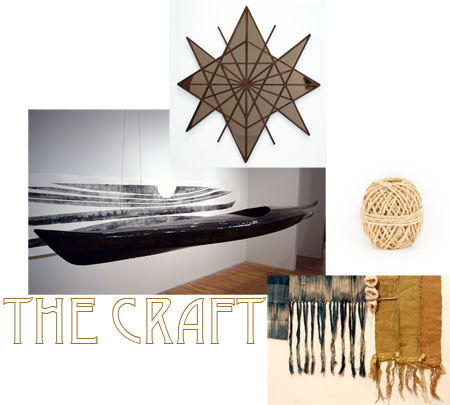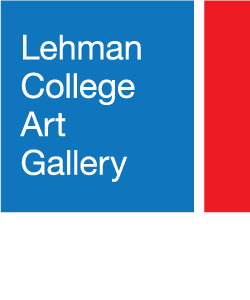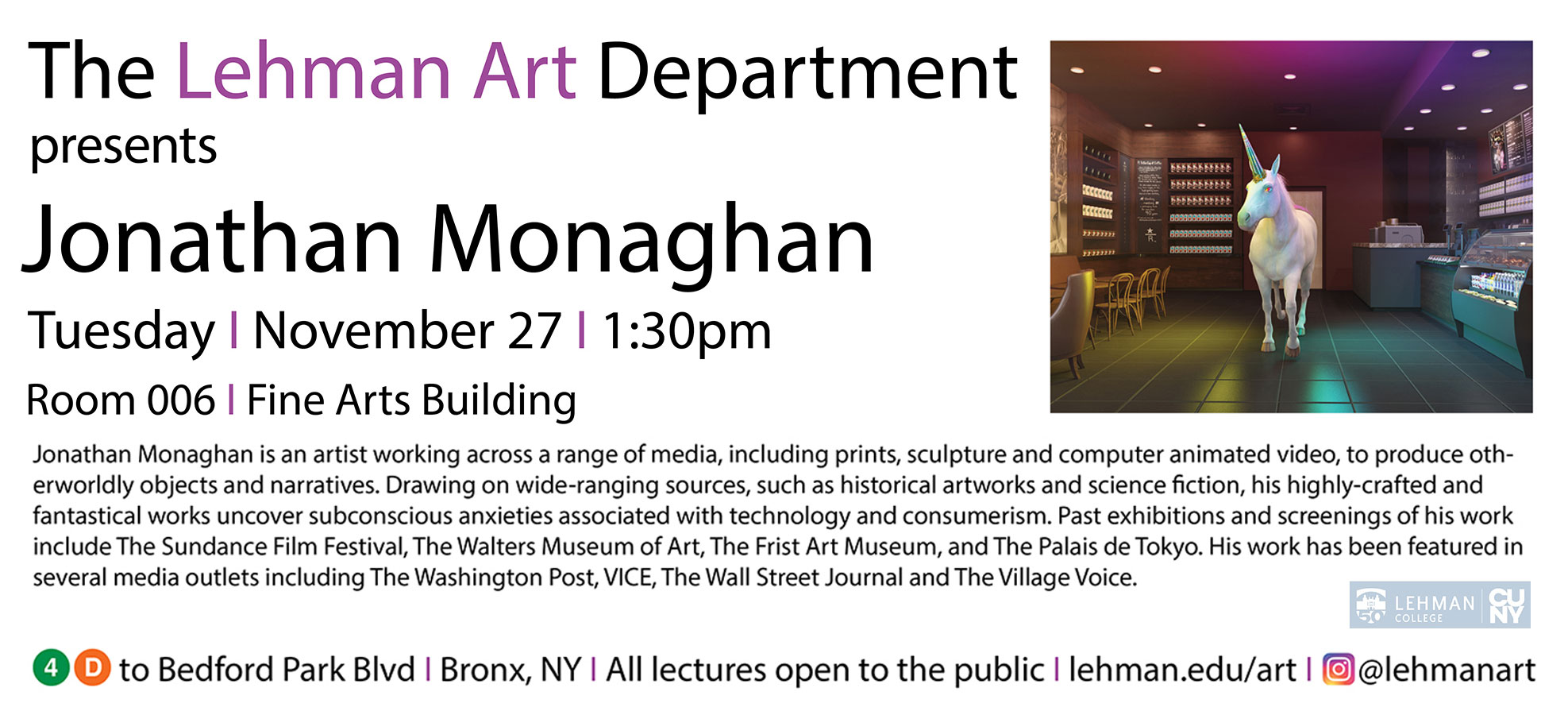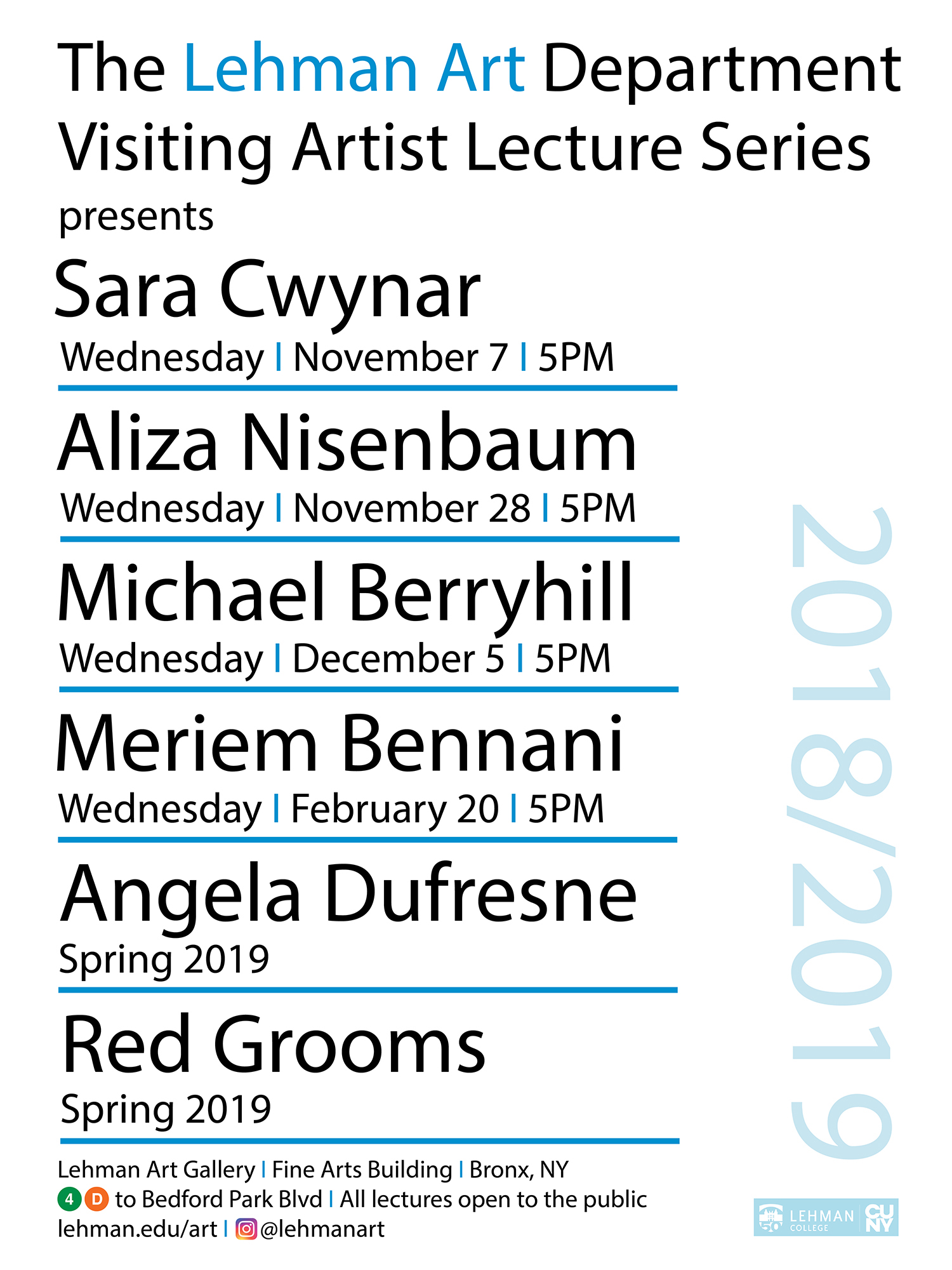The Craft
Craft & Craftsmanship
What an individual can fashion using bare hands is interesting given our contemporary relationship to time, manufacturing and digital culture. Information is instantaneous, labor for consumable goods is exported and the exponential growth of technology combined with natural awareness of mortality makes time especially precious. Craft and craftsmanship require time. In Glenn Adamson’s book, Thinking Through Craft, published in 2007, he credits Pattern and Decoration art of the 1970’s with “pave(ing) the way for a transformation of attitudes towards ornament, gender and ethnicity in the contemporary art world.” Previously, craft in fine art had specific political agendas. Currently, craft appears alongside every other discipline, facet and mode in contemporary art. Its renewed presence signals an appreciation for the hand-made, not machine made object. Crafted objects preserve the fleeting luxury of time.
There are a few things that can be said about artists who align themselves with craft. First, there is an appreciation for trade and skill. The virtue of the traditional craftsman is that his skill is intended to go un-noticed. The workmanship should be enjoyable to the eye but not compete for attention for it’s own sake. The opposite is true for craft in fine art. Skill is employed, but it is misused, bastardized, turned inside out, re-negotiated and ultimately presented in a way that is far outside the limits of what may appear in the commercial realm. This is a seductive sucker punch. The appreciation of workmanship prolongs the eureka! Moment. In the case of Craft, satire and commentary is administered as a slow burn, rather than a one-liner.
Second, the themes are universal. If you boil out the artistic character, strip away the idiomatic, material husk, stand back and absorb the transmission, you will find that craft artists are addressing populist concerns. Why else would you choose a format that is already part of a lush and seeded dialectic? Mass manufacturing, exploration (physical and psychic), collective memory and social relationships are addressed in this exhibition. The craft artist’s audience is everyone, in addition to individual, art historical precedents.
Finally, there is also dark side. The artists assembled for this exhibition were not only chosen for their use of vernacular craft but craftiness; they are adept in wielding a form of visual witchcraft. Comic book artist and writer Alan Moore states in the film, “The Mindscape of Alan Moore” that art is magic. He makes an analogy that the mere use of language is the same as casting a spell. This means that linguistic declarations are the same as actualized facts. The Craft artists are fluent in vernacular, craft dialects. They communicate as sorcerers of forecasting, conjuring, sacred geometry and duplicity. The intensions are not nefarious, but carefully timed insights into the preoccupations of contemporary society.
FORECASTING:
Marie Lorenz builds boats, which she uses to ferry people through New York City waterways. Her visually compelling and functional vessels are derived from the tradition of plywood boat building. I Am Half Sick of Shadows is a kayak that depicts the Manhattan and Brooklyn skylines on the starboard and port sides of the boat. The carving is a visual prediction of what you will see from the water, below street level. She also uses tidal charts and river currents to forecast her expeditions. Lorenz continues the narrative of uncharted exploration, a formative mythology that is currently cast away from contemporary daily experience. Her vessels and voyages allow us to review our surroundings from an uncertain perspective.
DUPLICITY:
Andy Coolquit creates his own must-have design trends by re-forming fragments of home furnishings and mass-market commodities. Samples of granny carts, table legs, metal mop poles, Breuer chairs and shelving racks are found, telescoped or welded together to form neo-Frankenstein, functional sculpture. Coolquit’s signature, sculptural palate is both his own but also representative of the goods we are throwing away. The rainbow of enamel paint is not added but selected and ordered by the artist. The lamps and wall-leaning sculptures pose what they are made of. They are physical ghosts of moving, re-furnishing, upgrading and re-decorating. This points to the predominant trend to discard, rather than to repair.
Brian Dewan’s I-CAN-SEE projections mimic the narration and pacing of 1950’s educational filmstrips. Using his drawings, voiceover and sound effect, the filmstrips target the confident and cajoling mantra of institutional pillars. His filmstrips question authority using an authoritative voice. Humor is a significant part of the process. Brand New Packages For Sale confidently proclaims the manipulative power of marketing. Dewan’s drawings and filmstrips recall the giddy, adolescent realization that the talking heads that surround us should be analyzed and laughed at. This is a refreshing experience that we can all enjoy.
Zoe Sheehan Saldaña is a master at manufacturing imposters. Her skills are invisible to viewers who have not read the subtext. She creates industrially manufactured objects by hand, playing out a competition between the handmade versus machine made object. The family of life jackets could be displayed and sold at West Marine and no one would be the wiser. That’s the point. The hand can compete, undetected and at higher quality. Her crafted objects are functional…useful in an emergency, in fact. This reminds us that we are capable creatures without the protective shroud of government, societal comforts and the Emergency Broadcast System.
Siebren Versteeg is a self-titled, programmist. He communicates in a coded language understandable to computers and few humans. The scripted, digital incantations spring forth from his PC, doing his bidding, making digital spells into pictorial reality. 32 Particle Board masquerades as a four by eight stock of particle board, a low-grade building material typically found at the Home Depot. ‘Randomness’ is a concern in programming and logarithmic procedure. One of the most outstanding, visual qualities of standard-issue particleboard is that the pressed woodchips appear to be randomly laminated into sheets. 32 Particle Board inverts this analog-digital conundrum. The particles seem to implode according to a prescribed, geometric infinity. Versteeg has employed formative lingo to create an impossible, four by eight stock.
SACRED GEOMETRY:
Carla Edwards enlarges the quilt pattern, Woven Ribbon, which has different significances in Western and Eastern cultures. Presented here is a collage of American flags that have been cut, dyed black, then crossed using the eight-fold pattern of Woven Ribbon. The familiar red and white stripes have been equalized. The vertical tower of ink drawings traces the same eight-fold pattern, making a comparison to Islamic symbolism for harmony. The flag is a national symbol and the protagonist in many patriotic rituals. Edwards creates a metaphoric, cultural bridge by reforming National symbols according to timeless, geometric figures. Shades of Ambivalence is the product of rituals that converge to form a symbolic, new whole.
Ruth Laskey’s intricate geometries appear as thought forms on lengths of linen. The formations are mysterious because they revel little about how they came about. The color threads are hand dyed and then woven together with un-dyed threads in a process much like tapestry, but also incorporating twill pattern. Twill fabric pattern is based on diagonals, where threads pass over and under each other. Laskey’s loomed process allows the drawings to seamlessly materialize on the blank linen. Twill Series (Black 3) depicts a series of chain linkages and is emblematic of her process.Laskey’s geometric structures are like apparitions. They give little clue as to how they appeared and seem eerily familiar, as if they emerged from a collective mind’s eye.
Marc Swanson’s, Psychic Studies II, illustrates the web of influences that form an individual, particularly the formation of masculine identity. His materials symbolically stand in for environmental factors and competing voices. The wooden armature of the large mirror is elegantly pieced in the style of rural cabinetry. The convergent web overlays several familiar geometric glyphs: the inverted triangle, the eight-pointed star, the asterisk, up and down arrows and the diamond, which is also folk symbol for ‘reflection’. When standing in front of Psychic Studies II, one’s image becomes obscured and fractured, divided by established structures.
CONJOURING:
Jim Drain’s Untitled (Michael Jackson Sweater) merges the ageless codes of knitting with a pixilated image. The hybrid makes logical sense given that both modes of representation are structured on a grid. Sweaters are quintessential to comfort, coziness and familiarity. The Untitled (Michael Jackson Sweater) is all of the above but also serves as wearable shrine for a pop star. The combined representational modes and pop icon blend well to evoke a specific, past moment in cultural history.
Josh Faught’s anxiously assembled tapestries combine traditional fiber arts with meditative, three-dimensional scrap booking. Parts of the whole are crocheted, dyed, embroidered, woven, pinned or stuck on. The various methods of attachment can be related to personal relationships – some impossible to unravel, others can be easily separated. The wall hangings also imply blanket narratives about ceremony and domesticity. Personal items of seeming importance are strung together with fringy furnishings, according to temporal hierarchy. The work emanates a sense of futility in trying to hold things together.
Michael Mahalchick’s assemblages place three strange feet within canons of domestic craft, high modernist painting and voodoo shrines. In the same breadth, one can consider Joseph Albers and pasta collage. This is an odd marriage of traditions, an endearing union with dark humor. The compositional contemplation of a wavy dish sponge in relationship to its burlap perch in “Luminate,” is both funny and in accordance with formal painting concerns. His illusionary arrangements of personal detritus conjure events, encounters, memories and predictions. He plays upon the power of humanly charged objects. In voodoo, intimate items are selected because they contain the residual power of past experience. Mahalchick selects his objects for both narrative implication and an aesthetic virtue that he finds hidden in household rigamarole.
Jocelyn Shipley’s sculptures re-dresses familiar kitsch entities. She sails through the eye of the hobby needle and returns with hair-raising, DIY invention. Her materials list demonstrates affection for what she satirizes. For instance, Scary, Scared, Scarecrow is made from a kitty costume, mask, hay, fake birds. Folklore and the occult are often purified, reduced and then deposited into the temporary realm of seasonal commerce. Shipley rescues her materials from the spotless, commercial realms and returns the ghoulish goods to their rightful, dark sector. Her ingenuity and humor are a large part of her sculptural, trade skills. She delivers her critique from an infiltrator’s perspective, pointing out to the rest of us, the cloying ridicule of dollar store culture.



